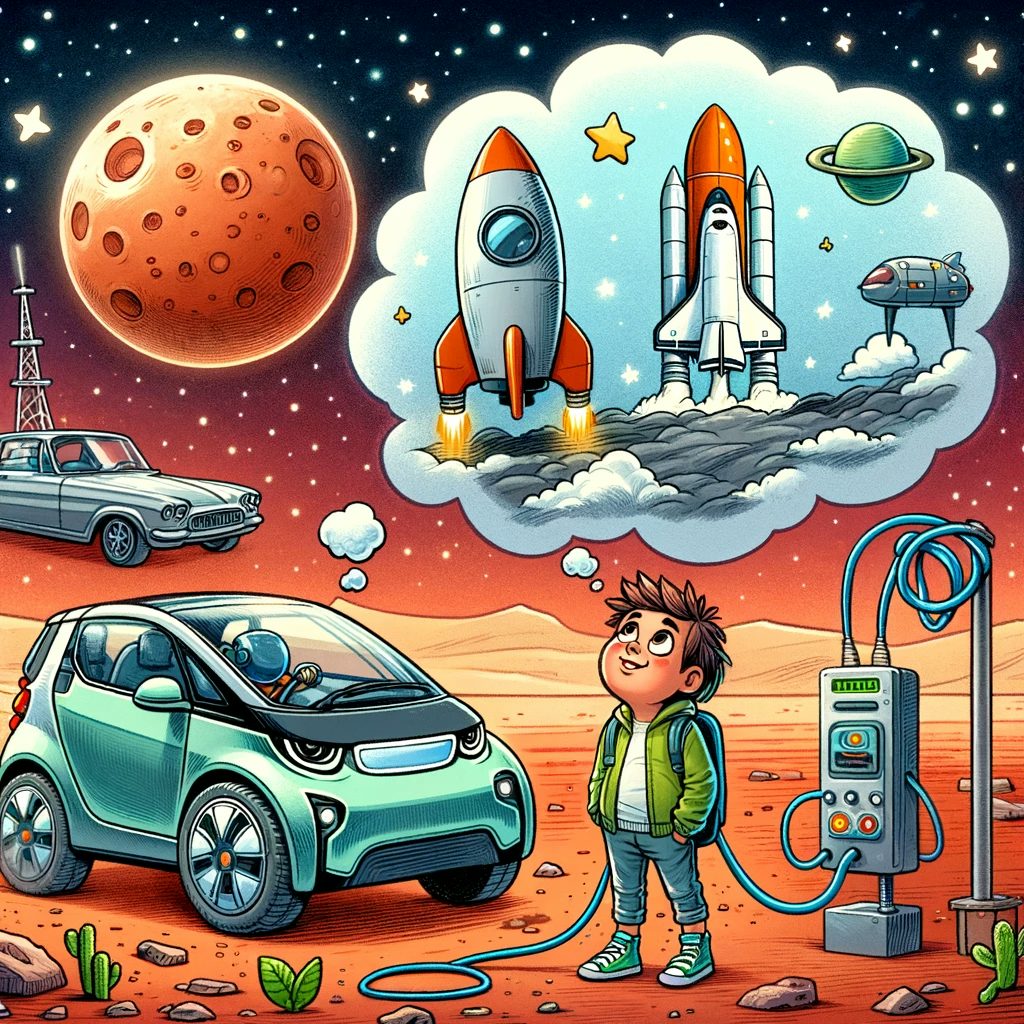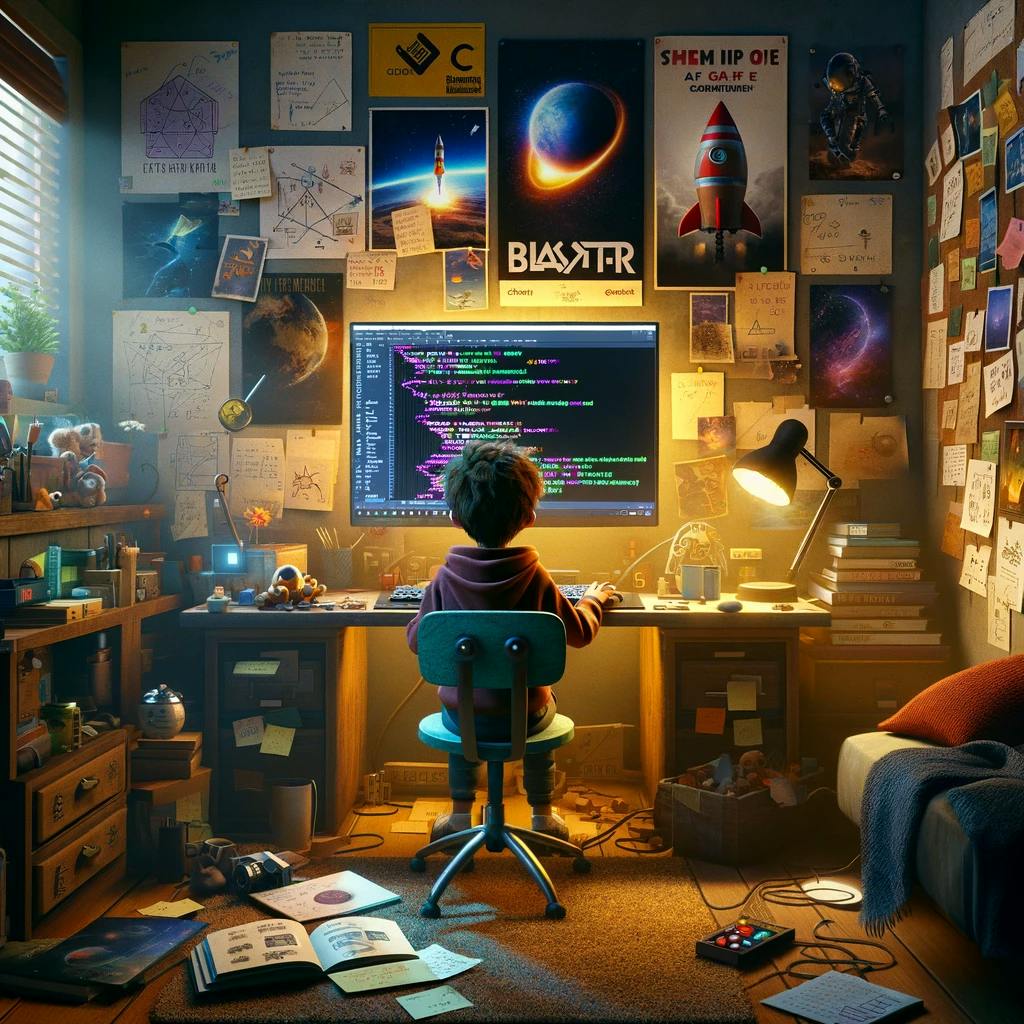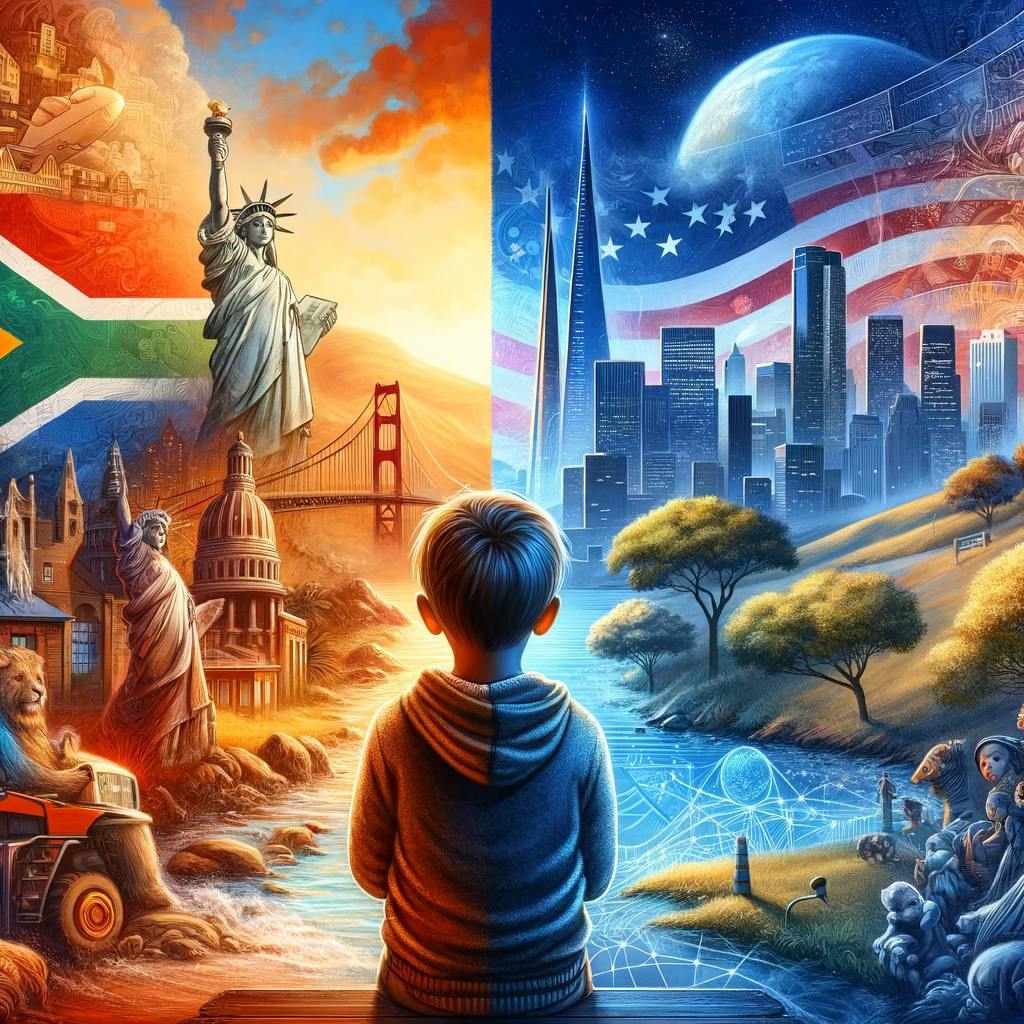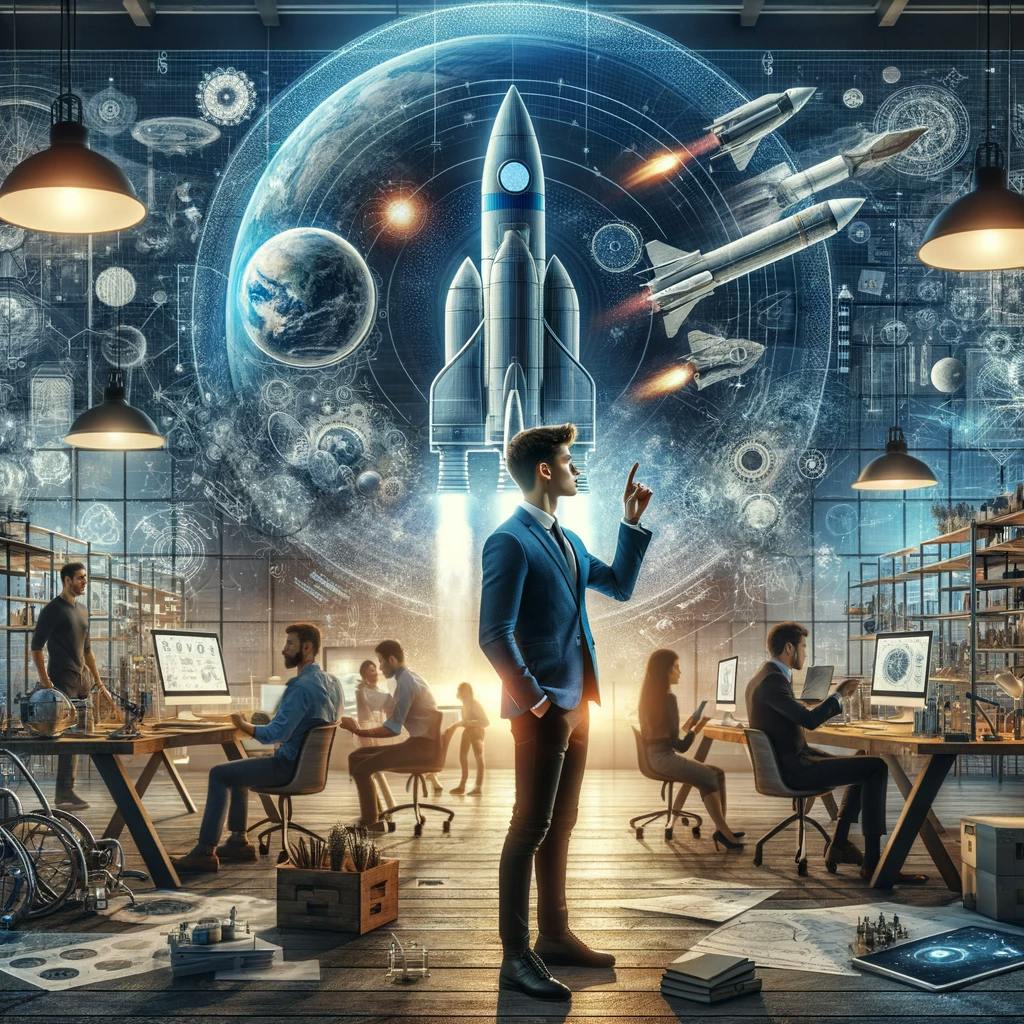Who is Elon Musk?

- Published on

I'm reading the bestseller "Elon Musk" by Walter Isaacson and wanted to write this article summarizing the key points of this man's story.
Childhood

Elon Musk grew up in a family that stimulated his early interest in technology and entrepreneurship. His father, Errol Musk, is an electrical engineer, pilot, and sailor, while his mother, Maye Musk, is a model and dietician. This family environment provided him with both inspiration and exposure to engineering and business concepts from an early age.
From a young age, Musk was extremely curious and had an insatiable thirst for knowledge. He spent a lot of time reading books on a wide range of topics, from science fiction to programming. This love for learning led him to teach himself how to program at the age of 12, when he created his first video game, "Blastar," which he later sold for about $500.
Musk described his childhood and adolescence as difficult periods, citing bullying at school and a complex family life. However, these challenges only strengthened his determination and desire to move to North America, which he saw as a place of greater opportunities to realize his ambitions.
First Project Blastar

The episode of "Blastar," the video game developed by Elon Musk during his adolescence, is an early example of his technical talent and entrepreneurial inclination. At the age of 12, Musk not only demonstrated his programming skills but also his ability to capitalize on his creations, selling the game's code to a technology magazine for about $500.
The game "Blastar" was relatively simple by today's standards, but for the 1980s, it was a notable feat for a kid who had taught himself programming. The game consisted of a space simulation where the player had to destroy alien ships. Although it was not extremely complex, Musk's ability to create a working and marketable product at such a young age foreshadowed his future career as an innovator and entrepreneur.
This episode not only marked the beginning of Musk's career in the world of technology but also illustrated two key aspects of his personality that would become recurrent in his future successes: a passion for technology and space, and an innate propensity for entrepreneurship. The sale of the game to a magazine also demonstrates his precocity in recognizing and seizing business opportunities, a trait that helped him successfully navigate the business world later in life.
These early successes laid the foundation for Musk's future career, which saw him launch and develop some of the most innovative and successful companies of the 21st century, including PayPal, Tesla, SpaceX, and many others. The story of "Blastar" has become an inspiring part of Elon Musk's myth, showing that with skill, passion, and a bit of entrepreneurial spirit, it is possible to achieve great things.
From South Africa to America

Elon Musk did not move to America with his parents. His migration to the United States was rather an individual journey undertaken to pursue his educational and entrepreneurial ambitions. After finishing school in South Africa, Musk first moved to Canada at the age of 17, taking advantage of his dual citizenship thanks to his Canadian mother, Maye Musk. This step allowed him to get closer to his ultimate goal of settling in the United States.
Arriving in Canada in 1989, Musk began his academic path at Queen's University in Ontario. After two years, he transferred his studies to the University of Pennsylvania in the United States, where he earned two degrees, one in physics and the other in economics. The decision to move to the United States was motivated by Musk's belief that it was the most favorable place to realize his entrepreneurial ambitions, particularly in the technology and innovation sector.
Musk's move to the United States was thus a deliberate step towards realizing his professional dreams, rather than a family relocation. His parents, Errol and Maye Musk, remained in South Africa and Canada, respectively, while Elon made his way to success in the United States.
Musk continued his studies in the United States at the University of Pennsylvania, where he earned a degree in physics and another in economics. After graduation, Musk briefly moved to California to start a PhD in applied physics and materials science at Stanford University but left the program after just two days to pursue his entrepreneurial ambitions in the internet boom of the 1990s.
ZIP2

His first major venture was Zip2, Zip2 Corporation represents Elon Musk's first true entrepreneurial success in the technology landscape. Founded in 1995 by Elon Musk, his brother Kimbal Musk, and Greg Kouri, Zip2 was a company that provided mapping and city guide software for online newspapers. This service allowed users to search for addresses, get driving directions, and find local businesses, essentially foreshadowing some of the functionalities we take for granted in services like Google Maps today.
Zip2 was a pioneer in using the internet to provide value-added services to traditional newspapers, at a time when the industry was just beginning to explore the web's potential. The company formed partnerships
with major newspaper publishers, including The New York Times and Chicago Tribune, demonstrating the validity and potential of its business model.
The sale of Zip2 to Compaq in 1999 for a total of about $307 million in cash and $34 million in stock options was significant for several reasons. First, it provided Musk with the initial capital that allowed him to pursue further entrepreneurial ventures. Second, the sale marked one of the first major exits in the tech startup sector, anticipating the dot-com boom.
X.COM

X.com was one of the first online financial companies, founded by Elon Musk in March 1999 using part of the capital obtained from the sale of Zip2. X.com's goal was to revolutionize the financial sector by offering online banking services that included money transfers and email payments, a concept that was avant-garde at the time.
The launch of X.com was a significant moment in internet history, marking one of the first attempts to create a completely online bank without physical branches. The platform was user-friendly and aimed to simplify banking operations for users, allowing them to conduct financial transactions securely and conveniently from afar.
In March 2000, X.com acquired Confinity, a company founded by Max Levchin, Peter Thiel, Luke Nosek, and Ken Howery. Confinity had developed PayPal as a service to facilitate payments between handheld devices, but soon focused on email payments, which proved to be much more popular. After the acquisition, X.com's attention shifted almost exclusively to PayPal, which quickly became the preferred method for transactions on eBay, the largest online auction site at the time.
The growth of PayPal was exponential, and it soon became evident that the online payment service had a much broader market potential than X.com's original concept of an online bank. Consequently, in 2001, X.com was renamed PayPal to better reflect its main focus.
In February 2002, PayPal went public with a highly successful initial public offering (IPO), and in October of the same year, eBay acquired PayPal for $1.5 billion in stock. This acquisition not only solidified PayPal's position as eBay's preferred payment system but also as one of the leading online payment platforms in the world.
The sale of PayPal represented a crucial moment in Musk's entrepreneurial career, providing him with the financial resources necessary to invest in new ambitious ventures, such as founding SpaceX and investing in Tesla Motors.
The legacy of X.com and PayPal is profound, significantly influencing the way people transfer money and shop online. Today, PayPal remains one of the most used online payment platforms worldwide, and Musk's initial vision of a more accessible and efficient financial system continues to influence the digital financial services industry.
SPACE X

The story of SpaceX and its founder, Elon Musk, is intrinsically linked to a series of bold events and decisions that marked the beginning of a new era in space exploration. The genesis of SpaceX can be traced back to Musk's desire to make multiplanetary life a reality, a goal that initially led him to consider a project called "Mars Oasis." This project involved sending a small greenhouse to Mars to grow plants and, consequently, generate public and political interest in space exploration. However, Musk soon realized that the cost of space launches was the main obstacle to achieving this dream.
The Trip to Russia
To overcome this obstacle, Musk traveled to Russia in 2001 with the intention of buying decommissioned intercontinental ballistic missiles (ICBMs) that could be converted to launch payloads into space. However, negotiations with the Russians did not go as hoped. Musk found the missiles were being sold at exorbitant prices, and on more than one occasion, negotiations failed. These experiences in Russia were crucial, as they convinced Musk that the only way to reduce the costs of space travel was to build his own rockets.
The Foundation of SpaceX
Motivated by these difficulties, Musk founded Space Exploration Technologies Corp., or SpaceX, in 2002 with the goal of developing more affordable space rockets. His plan was revolutionary: to reduce the cost of space travel by an order of magnitude through the reusability of rockets, a vision that was widely considered unachievable at the time.
The First Four Launches
SpaceX faced many challenges in its early years, culminating in the first four launches of the Falcon 1 rocket. The first launch, which took place in 2006, failed due to an onboard fire that caused the launch vehicle to malfunction. The second and third launches, in 2007 and 2008 respectively, also failed to reach orbit due to various technical problems. These failures put the company in a precarious financial situation.
However, Musk did not give up. The fourth launch of the Falcon 1, on September 28, 2008, was a historic success, marking the first time a privately developed orbital launch vehicle reached Earth orbit. This success not only saved SpaceX from bankruptcy but also demonstrated the feasibility of Musk's concept.
The Deal with NASA
The success of the fourth launch was a turning point
for SpaceX. Shortly thereafter, in December 2008, SpaceX received a contract from NASA worth $1.6 billion to transport payloads to the International Space Station (ISS) using its Falcon 9 launch vehicle and Dragon spacecraft. This contract marked the beginning of a fruitful collaboration between SpaceX and NASA and solidified SpaceX's position as a leader in the commercial launch sector.
The journey of SpaceX, from failed negotiations in Russia to partnership with NASA, is a testament to Musk's vision, determination, and innovation. This story highlights the importance of perseverance in the face of obstacles and marked the beginning of a new era of commercial space exploration that continues to evolve today.
TESLA

Tesla, Inc., initially founded as Tesla Motors in 2003 by Martin Eberhard and Marc Tarpenning, has become synonymous with the revolution in the automotive sector, leading the global shift towards electric vehicles (EVs). Elon Musk, who has become the most associated figure with Tesla, came onto the scene as the main investor during the company's first round of funding in February 2004, significantly contributing to its development and vision.
The Foundation and the Goal
Tesla's goal was clear from the beginning: to accelerate the world's transition to sustainable energy. This ambitious goal aimed to demonstrate that people did not have to compromise on performance, autonomy, or style to drive an electric vehicle.
Roadster: The First Step
Tesla introduced its first vehicle, the Tesla Roadster, in 2008. Based on the platform of the Lotus Elise, the Roadster was a sports car that could go from 0 to 60 mph in less than 4 seconds, with a range of over 245 miles per charge - a remarkable achievement at the time. This vehicle debunked many myths about the limitations of electric vehicles, establishing Tesla as a serious competitor in the automotive sector.
Model S: A Game Changer
The success of the Roadster paved the way for Tesla to develop more accessible and practical vehicles. The Model S, launched in 2012, was a turning point. It was a luxury all-electric sedan that won numerous awards, including car of the year from various industry publications. The Model S offered various battery configurations for different ranges, reaching up to 370 miles per charge in later versions, and introduced innovative features such as over-the-air software updates and Autopilot, Tesla's driver assistance system.
Model X and Model 3: Expanding the Lineup
Tesla continued to expand its lineup with the launch of the Model X, a fully electric SUV, in 2015, known for its "falcon-wing" doors. Although the Model X received criticism for its complexity and high price, it demonstrated Tesla's continuous innovation in electric vehicle design and technology.
The Model 3, introduced in 2017, was a crucial moment for Tesla, marking its entry into the mass market. With a significantly lower starting price compared to previous models, the Model 3 aimed to make electric vehicles accessible to a broader audience. It quickly gained popularity, becoming one of the world's best-selling electric vehicles.
Challenges and Successes
Tesla's journey has not been without challenges, including production issues, criticism of Autopilot's safety, and legal controversies with Elon Musk. However, the company has overcome these obstacles, demonstrating remarkable innovation and scaling production capabilities.
Impact on the Industry
Tesla has had a profound impact on the automotive industry, prompting other manufacturers, both traditional and startups, to accelerate the development of electric vehicles. It has also expanded its footprint in the renewable energy sector with products such as solar panels and the Powerwall home battery, remaining true to its mission of promoting a sustainable energy future.
Under the leadership of Elon Musk, Tesla has not only become the world's most valuable automaker by market capitalization but has also redefined consumer expectations regarding electric vehicles, demonstrating that they can be both desirable and high-performing. This shift in perception has contributed to a growing global adoption of electric vehicles, positioning Tesla not only as a leader in sustainable mobility but also as a catalyst for change in the broader energy industry.
With the introduction of innovative technologies and a commitment to cost reduction, Tesla continues to push the boundaries of innovation, driving the transition toward a cleaner and more sustainable future.
Conclusion
The story of Elon Musk and Tesla is far from over, as this visionary entrepreneur continues to embark on ambitious journeys that have the potential to reshape industries and pave the way for a future we can hardly imagine And this article will be continually updated to capture the unfolding chapters of Elon Musk's remarkable journey and the impact of his ventures on the world.
Italian Version
Italian version of this article is available here Chi e' Elon Musk?